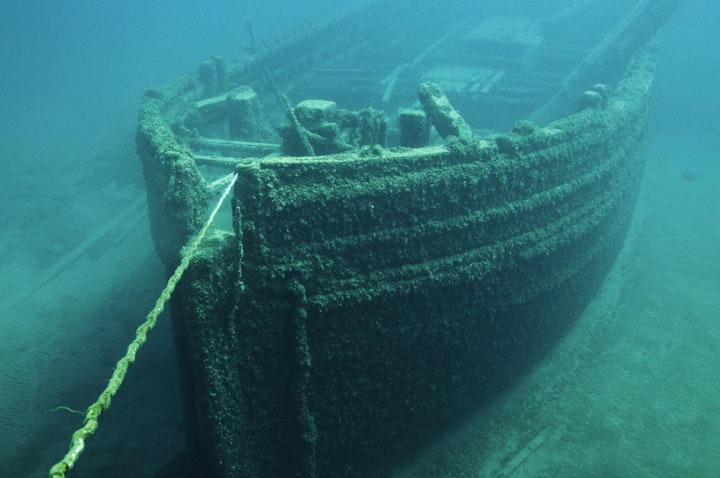The Titanic |The Unsinkable Dream and the Tragic Reality
The Unsinkable Dream and the Tragic Reality
The idea for the Titanic emerged in the late 19th century as part of a fierce competition among various shipping companies to build the most opulent and technologically advanced ocean liners. White Star Line, a British shipping company, sought to outdo its rivals, Cunard and others, by constructing a trio of massive ships, including the Olympic, the Britannic, and the most famous of them all, the Titanic.
Designed by the renowned naval architect Thomas Andrews, the Titanic was hailed as the epitome of luxury and innovation. Its interiors were lavishly decorated with ornate woodwork, plush furnishings, and opulent amenities, catering to the most discerning passengers of the time. The ship was also equipped with cutting-edge safety features, including watertight compartments and advanced communication systems. Construction of the Titanic began on March 31, 1909, at the Harland and Wolff shipyard in Belfast, Northern Ireland. The shipyard was a bustling hub of activity, with thousands of workers laboring tirelessly to bring this magnificent vessel to life. It was a feat of engineering and craftsmanship, with every detail meticulously planned and executed.
The Titanic was launched on May 31, 1911, in a grand ceremony attended by thousands of onlookers. As the massive ship slid into the water, it marked the culmination of years of planning and labor. However, little did anyone know that the Titanic's journey would be short-lived and end in tragedy.
The Titanic's maiden voyage commenced on April 10, 1912, from Southampton, England. The ship made stops in Cherbourg, France, and Queenstown (now known as Cobh), Ireland, before embarking on its journey across the North Atlantic towards New York City. Onboard were over 2,200 passengers and crew members, representing a diverse cross-section of society, from wealthy industrialists and celebrities to immigrants seeking a new life in America.
The Titanic's reputation as the ultimate luxury liner lived up to its billing. Passengers reveled in its opulent amenities, including a swimming pool, gymnasium, Turkish baths, and exquisite dining rooms. The ship's orchestra provided entertainment, and the grand staircase became an iconic symbol of the Titanic's elegance.
The tragic turn of events began on the night of April 14, 1912, when the Titanic struck an iceberg in the frigid waters of the North Atlantic. The collision, caused by a combination of factors, including miscommunication and a failure to heed warnings about ice in the ship's path, led to a catastrophic rupture of the ship's hull.
As the Titanic took on water, it quickly became evident that the ship was in grave danger. Despite the heroic efforts of the crew to contain the flooding, the scale of the disaster was overwhelming. The passengers and crew faced a dire situation as the ship's lifeboats were deployed, but there were not enough to accommodate everyone on board.
The Titanic's descent into the icy depths of the Atlantic was a harrowing ordeal. As the ship listed and eventually broke in two, passengers and crew faced a desperate struggle for survival. Many lifeboats were launched only partially filled, and the lack of adequate safety drills and lifeboat training compounded the tragedy.
The survivors in the lifeboats watched in horror as the Titanic's lights dimmed and then disappeared beneath the waves. In the end, over 1,500 people lost their lives in the disaster, making it one of the deadliest peacetime maritime tragedies in history.
The sinking of the Titanic sent shockwaves around the world and prompted immediate investigations and inquiries. The disaster raised questions about the safety regulations governing ocean liners, the adequacy of lifeboats, and the behavior of the ship's crew and management.
Both the United States and the United Kingdom conducted inquiries into the sinking, with a focus on the actions of the ship's captain, Edward J. Smith, and the White Star Line. While the investigations revealed lapses in safety practices, they also led to significant improvements in maritime safety regulations, including the requirement for more lifeboats and better training for crew members.
The sinking of the Titanic has left an indelible mark on popular culture and the human psyche. The tragedy has been the subject of numerous books, films, documentaries, and exhibitions. It continues to captivate the public's imagination, with countless stories of heroism, sacrifice, and loss emerging from that fateful night.
One of the enduring mysteries of the Titanic is the search for its wreckage, which was finally discovered on the ocean floor in 1985 by oceanographer Robert Ballard. Since then, numerous expeditions have been launched to explore and document the remains of the ship, shedding light on the conditions and events that led to its demise.
The story of the Titanic is a timeless tale of human ambition, hubris, tragedy, and resilience. It serves as a stark reminder of the unpredictability of nature and the consequences of overconfidence. While the Titanic's sinking claimed the lives of many, it also ushered in a new era of maritime safety regulations, ensuring that future generations of passengers would have a greater chance of survival in the event of a disaster at sea.
The legacy of the Titanic endures, not only in the artifacts recovered from the ocean floor but also in the stories of those who were on board that ill-fated voyage. It reminds us of the fragility of human endeavors and the need for constant vigilance in the face of nature's forces. The Titanic will forever be remembered as a symbol of both human achievement and human tragedy, an emblem of the enduring human spirit in the face of adversity.






Comments (1)
Great work! Good job!